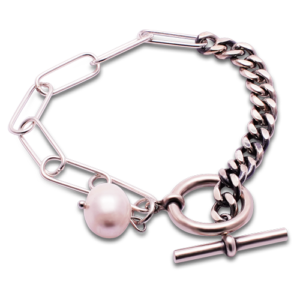Photos have a remarkable capacity to catch minutes and recollections that we hold dear. Unfortunately, a variety of factors, including aging, light exposure, humidity, and improper handling, can cause these photographs to deteriorate over time. Fortunately, you can figure out how to fix a harmed photograph with the right instruments and methods. We’ll walk you through the steps of How to Repair a Damage Photo step-by-step guide.
Important tool
- Damaged Photo: Start with the damaged photograph you wish to restore.
- Scanner: A scanner is necessary to create a high-resolution digital copy of the damaged photo.
- Computer: You’ll need a computer equipped with photo editing software.
- Photo Editing Software: Software options like Adobe Photoshop, GIMP, or free online editors like Pixlr work well.
- Digital Pen and Tablet (optional): Useful for precise touch-ups.
Digitize the Photo
Begin by scanning the damaged photo at the highest resolution possible. This step is crucial as it provides a digital version that you can work on without harming the original. Save the scanned image on your computer.
The most effective method to utilize Digitize the Photograph:
- Go to the Digitize the Photograph site.
- Click the “Start” button.
- Give Digitize the Photo permission to use your webcam.
- Put your photograph on a level surface in a sufficiently bright region.
- Focus the photograph on the webcam outline.
- Click the “Take a picture” button.
- Digitize the Photograph will naturally trim and upgrade your photograph.
- Click the “Download” button to save your photograph to your PC.
Assess the Damage
Zoom in on the digital copy and carefully examine the damage. Identify tears, stains, scratches, and fading. Understanding the extent of the damage will help you plan your restoration process effectively.
To evaluate the harm in a photograph, you can follow these means:
- Determine the kind of damage: What sort of harm is apparent in the photograph? Is it a break, opening, stain, or something different?
- Examine the extent of the harm: What size is the affected area? How profound is it? Is it disconnected, or does it influence different pieces of the article or design?
- Think about the seriousness of the harm: Is the harm corrective, or is it underlying? Is it affecting the structure or object’s functionality or safety?
- Find out what caused the damage: On the off chance that conceivable, attempt to distinguish the reason for the harm. When figuring out how to fix the damage and prevent it from happening again, this information may be of assistance.
Remove Dust and Scratches
Use the healing brush or clone stamp tool in your photo editing software to eliminate dust, scratches, and minor blemishes. This process involves copying nearby undamaged areas and blending them over the damaged spots.
- Open the photo in the software.
- Go to the Filter menu and select Noise > Remove Dust and Scratches.
- A dialog box will appear with a preview of the photo and a slider.
- Adjust the slider to remove the desired amount of dust and scratches.
- Click OK to apply the filter.
Repair Tears and Creases
For torn or creased areas, create a new layer in your editing software. Use the pen tool or selection tools to meticulously outline the damaged areas. Then, apply the clone stamp or healing brush tool to blend the torn edges together. Adjust the layer opacity as needed for a seamless result.
- Open the photograph in your photograph-altering programming program.
- Focus on the tear or wrinkle that you need to fix.
- Select the damaged area with a tool for selection.
- In the event that the tear or wrinkle is little, you can utilize the Clone Stamp device to duplicate pixels from an unharmed region of the photograph and glue them over the harmed region.
- In the event that the tear or wrinkle is huge, you might have to utilize a substance-mindful fill device. This sort of hardware will consequently fill in the harmed region with pixels from the encompassing region of the photograph.
- Zoom out and look over your work after you’ve fixed the crease or tear.
- Assuming that you are happy with the outcomes, save your changes.
Color Correction
If your damaged photo has faded or discolored, employ color correction tools to restore its original colors. Adjust levels, contrast, and saturation until the colors closely resemble the original.
- White equilibrium: White equilibrium is the general variety temperature of a photograph. It tends to be changed in accordance with making colors look more normal or to make a particular state of mind or air.
- Difference and immersion: Saturation is the intensity of a color, while contrast is the difference between the lightest and darkest parts of a photo. Changing these settings can make a photograph look more dynamic and punchy, or all the more delicate and quelled.
- Color specks: A tint of a single color that is applied to the entire image is known as a color cast. It very well may be brought about by different elements, for example, the hour of the day, the kind of lighting utilized, or the camera settings. Variety projects can be eliminated utilizing various instruments, like the Tint/Immersion slider or the Variety Equilibrium device.
Rebuild Missing Elements
For missing or severely damaged sections of the photo, you may need to reconstruct them. While this can be time-consuming, it’s essential for a complete restoration. Utilize reference images or your imagination to recreate missing facial features, backgrounds, or objects.
- Open the photograph in your photograph-altering programming.
- Recognize the missing components in the photograph.
- Select an instrument to remake the missing components.
- Utilize the chosen apparatus to reorder comparative components from different pieces of the photograph to fill in the missing regions.
- Change the variety, brilliance, and difference of the replicated components to mix them in with the encompassing regions.
- Steps 3-5 should be repeated until all of the missing parts have been replaced.
- Save the altered photograph.
Final Touch-Ups
Zoom in and carefully inspect your restored photo. Make any final adjustments to ensure a natural and seamless appearance. Pay close attention to details like skin texture, fine lines, and background textures.
- Begin by changing the essential settings. This incorporates splendor, differentiation, and white equilibrium. You can involve the sliders in your photograph-altering programming to make these changes.
- Eliminate any flaws or interruptions. This should be possible by utilizing the clone stamp instrument or the recuperating brush apparatus.
- Add a vignette. A vignette is when the image’s edges become darker. It can assist with noticing the subject in the focal point of the picture. To add a vignette, you can utilize the vignette device in your photograph-altering programming.
- Hone the picture. This will assist with making the picture look crisper and more nitty gritty. This adjustment can be made with your photo editing software’s sharpen tool.
- Change the tones. You can utilize the shade, immersion, and gentility sliders in your photograph-altering programming to change the varieties in your picture.
- Save your picture. Make sure to save your image in a high-quality format once you are satisfied with the modifications you have made.
Save and Preserve
Whenever you’re happy with the rebuilding, save the picture in an excellent configuration like Spat or PNG to forestall further loss of value. Also, make sure the damaged original photo is stored safely.
- Find the photograph you need to save. This could be on a site, in an email, or on your gadget.
- Right-snap (or control-click) on the photograph. This will open a setting menu.
- Select “Save image as.”
- Pick an area and filename for the photograph.
- Click “Save.”
Conclusion
Fixing a harmed photograph is a beautiful source of both blessing and pain that requires persistence, meticulousness, and a few specialized abilities. While specific photograph reclamation activities can be multifaceted and time-serious, the delight of restoring appreciated recollections is gigantically fulfilling. Equipped with the right apparatuses and strategies, you can defend your loved photos for people in the future. Thus, focus in, follow this aide, and set out on your excursion to revive those darling recollections. Blissful reestablishing! If this article “How to Repair a Damage Photo” helps you then leave your important comment.


























